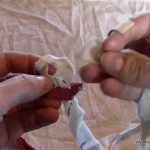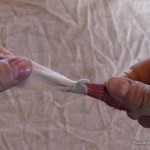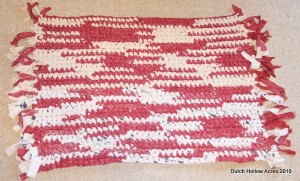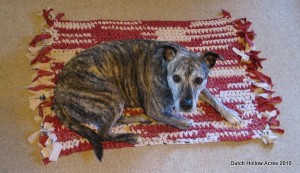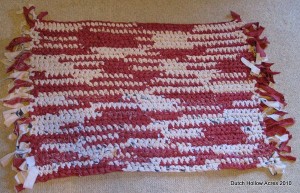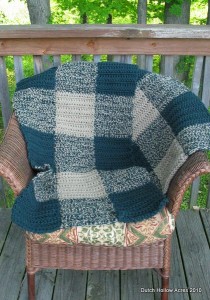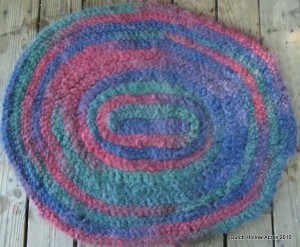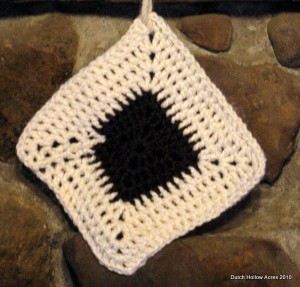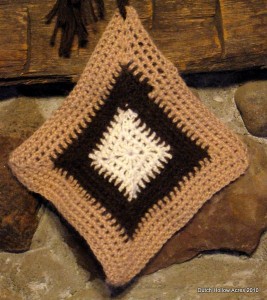Welcome Fiber Arts Friday Folks
Last week I spent a lot of time cleaning the screen porch and getting all the leaves and dirt out of there that blew in through a hole last fall. What a mess. After I got the floor cleaned it looked so bare. It wanted something, a rug. I still had some old flannel sheets hanging around so I got to work ripping them into strips.
I decided on making a rectangle rug with a random color pattern. It turns out that was the best choice because I ran out of the beige color! I ended up replacing it with a more ivory color sheet which at a quick glance you don’t notice but if you look at it hard enough you can see where half the rug has beige and the other half has an ivory look.
The method I used to connect the strips is exactly the same as the Christmas Rag Rug I made for my brother. This time I decided not to make the rug the “toothbrush” way but crocheted it instead. Crochet is faster and makes the rug a bit thicker but doesn’t wear as well as a toothbrush or braided rug.
Directions:
Making Fabric Strips:
For my rug project I decided to repurpose some old flannel sheets. I cut a little slits along one edge of the sheet every ½ to an inch or so. Now comes the fun part! Grab that little fabric tag and rip! The flannel sheets tore very evenly right down to the end without the need to cut each strip out by hand. If you have a cat hanging around this process is very fascinating and you might have to fight for some of your strips back.
How To Connect Fabric Strips:
Now that you have all of these strips hanging around you need to be able to put them together. Many suggestions have you sewing the strips together, which is great, if you have that kind of time to waste. Easiest method I found is to cut a small slit in the ends of each strip and slipknot them together. Thread one strip through the slit you made in the other and then feed the tail of the 1st strip through the slit you made in the end. Pull tight and voila you have connected the 2 strips together.
Hook Size: S-35
Stitch: Single Crochet
Pattern: SC a chain the length you want the rug +1 SC and turn repeat until the width desired is reached.
Color Pattern: I chose to do a random pattern so I connected the strips as I went.
Fringe: Cut fabric strips into 8″ lengths. Fold in half and feed the fold through the end and slip the tails through the fold and tighten.
Finished rug size came out to 2ft x 3ft! My dog Brindee has claimed the rug as her own already. *sigh* maybe it’ll end up being a pet rug instead.
